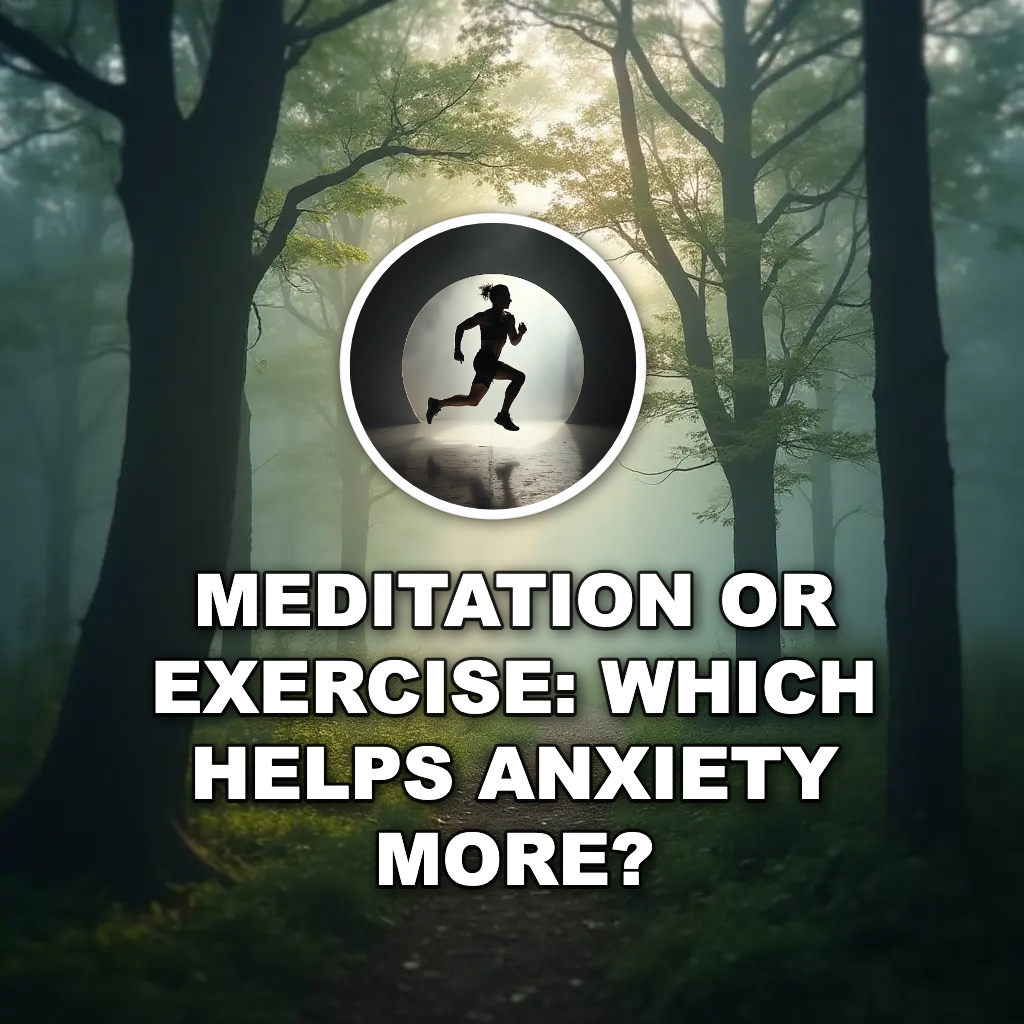Some days, anxiety feels like a constant hum in the background. We try to soothe it with helpful habits, but choosing what works best can feel confusing. Meditation invites stillness, while exercise encourages movement. Both have a place in easing anxious thoughts.
I’ve found myself drawn to both over the years. Some mornings feel right for a quiet pause, while other days, a gentle walk clears my mind. You might find your own rhythm too.
Let’s take a quiet look at how these two practices support your mental well-being, and how you might begin.
Understanding Anxiety
Anxiety is more than worry. It’s a feeling that can shape how we see the world, making ordinary things feel overwhelming. Many people experience racing hearts, restless thoughts, and an undercurrent of unease in daily life.
Understanding that anxiety is common can help soften its grip. You’re not alone in feeling this way. And the good news is, practices like meditation and exercise can gently support your mind and body through it.
Meditation: A Quiet Pause for the Mind
Meditation is a practice of sitting with your thoughts, gently noticing them without judgment. Research shows that meditation can lower anxiety by helping your brain find steadier patterns, as seen in a Harvard study on increased gray matter in areas linked to calmness and empathy.
Imagine sitting quietly and letting your thoughts pass by like leaves floating down a stream. Even a few minutes of this quiet space can help you feel calmer.
You don’t need special tools or long sessions. A few deep breaths, a quiet room, or a guided meditation can be enough to begin.
How Meditation Supports the Brain
When you meditate regularly, your brain begins to shift. Studies suggest that areas linked to calmness and empathy grow stronger. Think of it like gently rewiring your mind toward peace.
The next time you feel anxiety rising, pause. Close your eyes if it feels right. Breathe deeply. Let your thoughts come and go.
Exercise: Moving Stress Through the Body
Movement also plays a powerful role in calming the mind. Exercise encourages your body to release endorphins, the natural chemicals that help you feel more balanced, as confirmed by the Mayo Clinic.
Whether it’s a gentle walk, stretching, or dancing around your living room, movement shifts your energy. It helps release tension stored in your body and refreshes your mind.
You don’t need to be an athlete. Even five or ten minutes of movement can help.
Exercise and the Stress Response
Physical activity also helps regulate cortisol, the hormone linked to stress, as supported by research summarized by the Mayo Clinic. Over time, moving your body can lower overall stress levels and help your body respond to challenges with more ease.
If anxiety feels like a tight knot inside you, gentle movement can help soften it.
Meditation vs. Exercise: Do You Have to Choose?
The lovely thing is, you don’t have to pick one or the other. Both meditation and exercise support your well-being in different ways. Some people enjoy both, some lean more toward one.
If sitting quietly feels soothing, start there. If moving your body feels better, begin with that. Or try combining them, like mindful walking.
The best practice is the one that feels kind to you.
Gentle Ways to Start Meditating
- Start small. Even two minutes is enough.
- Focus on your breath or a calming word.
- Try guided meditations if it helps you focus.
- Create a little routine – morning, midday, or bedtime.
Let it be simple. Let it be yours.
Gentle Ways to Start Exercising
- Choose movement you enjoy, not what you “should” do.
- Start with gentle walks, stretching, or dancing to your favorite song.
- Set a small goal, like 10 minutes a day.
- Notice how your body feels, without pushing yourself too hard.
Letting Go of the Myths
Meditation isn’t just for monks, and exercise doesn’t require fancy gear. Both can be simple, quiet parts of your day.
You don’t need a perfect routine to start. Your gentle effort is enough.
Can You Blend Both?
Many people find that combining mindfulness and movement helps them most. A peaceful walk outdoors, yoga with soft breathing, or stretching while listening to calming music can offer the best of both worlds.
Try what feels good and adjust over time.
🌻
There is no perfect answer to “which is better.” The real question is, “What feels kind to me today?”
Start where you are. Try one gentle practice and notice how your body and mind respond.
What’s one small step you could try this week to support your calm?

